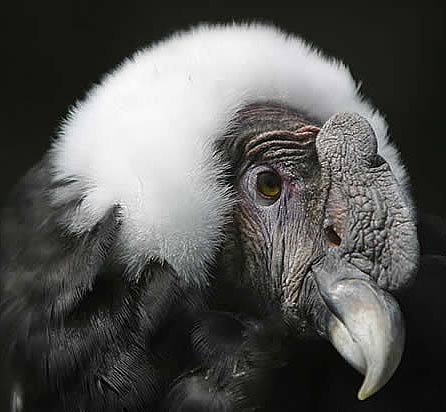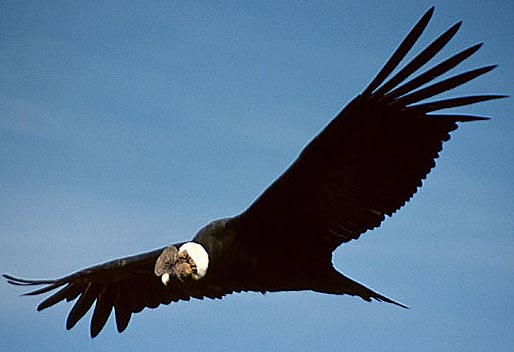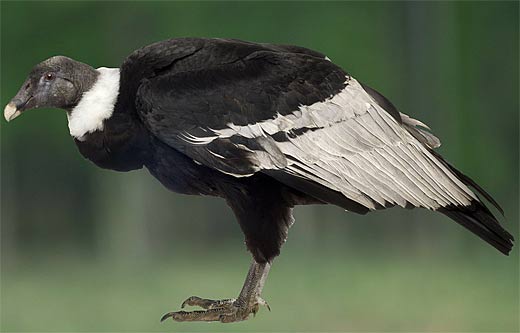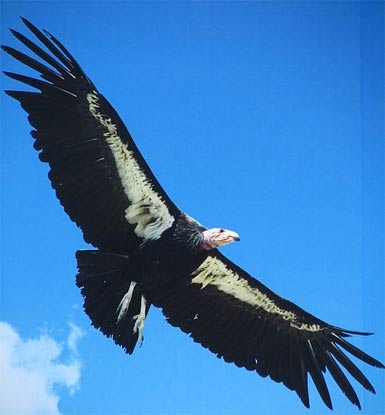Andean Condor – Largest Wingspan, Gruesome Eator

It’s a bird, it’s a plane, and no it’s an Andean condor! This huge bird has one of the largest wingspans of any bird with a wing span of 10.5 ft (3.2 m). It is slightly edged out by the wandering albatross (see comparison image) for longest wingspan.
If you have seen one of these birds you may not have realized you saw one because they are also known as vultures. This bird is primarily found in South America and is quite a massive bird to see. You might be surprised at this large bald scavenger.

What’s for Dinner Condor?
The main course of the condor is carcasses. Yeah, we know, but hey someone has to clean up the messes left behind. These large scavenger birds love to chow on the bodies of deer, cows and anything large. And that’s why they have featherless heads, so that when they stick their heads in dead bodies to eat they don’t come out so covered in muck. They have also been known to snack on eggs in other birds nest. Now if the condor is located near the water, they will eat any mammals that have beached themselves. If you look up and see a bird or two circling, that usually is a good indicator of a dead animal below and they are going to go in for the meal.

Life Span to Equal Wing Span?
The Andean condor can live to be almost 50 years old and they will mate for their entire lives. They contain their nests in areas that are virtually impossible to reach by other animals and humans. The worrisome issue with these birds is that they are on the endangered species list with a status of near threatened. Although this bird is a national symbol for many countries the condor’s numbers are not good.

There are many great assets of the Andean condor that have been globally recognized for hundreds of years. It is recognized as a symbol of power and health with pictures on stamps, money and flags across the Americas. The Andean condor may be viewed by many as a symbol of the misunderstanding of nature as the decline of its numbers can partly be attributed to the fear and hostile opinion farmers with cattle, small animals and livestock have for them. Hopefully, with the ability to capture, mate them in captivity and then release them (something that has had success with their cousins the California condor) their numbers will increase over the decade to come.
